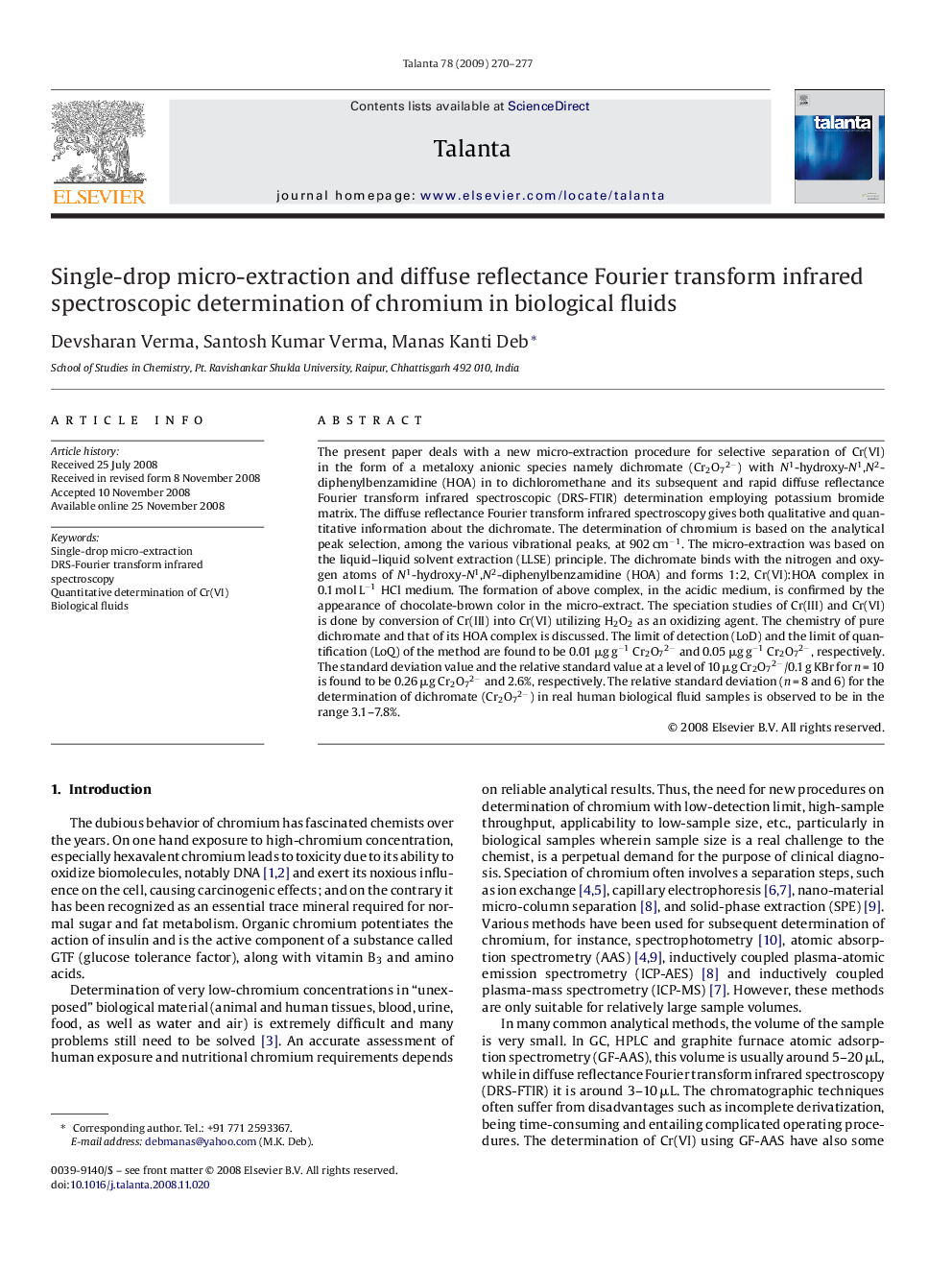| Article ID | Journal | Published Year | Pages | File Type |
|---|---|---|---|---|
| 1245130 | Talanta | 2009 | 8 Pages |
The present paper deals with a new micro-extraction procedure for selective separation of Cr(VI) in the form of a metaloxy anionic species namely dichromate (Cr2O72−) with N1-hydroxy-N1,N2-diphenylbenzamidine (HOA) in to dichloromethane and its subsequent and rapid diffuse reflectance Fourier transform infrared spectroscopic (DRS-FTIR) determination employing potassium bromide matrix. The diffuse reflectance Fourier transform infrared spectroscopy gives both qualitative and quantitative information about the dichromate. The determination of chromium is based on the analytical peak selection, among the various vibrational peaks, at 902 cm−1. The micro-extraction was based on the liquid–liquid solvent extraction (LLSE) principle. The dichromate binds with the nitrogen and oxygen atoms of N1-hydroxy-N1,N2-diphenylbenzamidine (HOA) and forms 1:2, Cr(VI):HOA complex in 0.1 mol L−1 HCl medium. The formation of above complex, in the acidic medium, is confirmed by the appearance of chocolate-brown color in the micro-extract. The speciation studies of Cr(III) and Cr(VI) is done by conversion of Cr(III) into Cr(VI) utilizing H2O2 as an oxidizing agent. The chemistry of pure dichromate and that of its HOA complex is discussed. The limit of detection (LoD) and the limit of quantification (LoQ) of the method are found to be 0.01 μg g−1 Cr2O72− and 0.05 μg g−1 Cr2O72−, respectively. The standard deviation value and the relative standard value at a level of 10 μg Cr2O72−/0.1 g KBr for n = 10 is found to be 0.26 μg Cr2O72− and 2.6%, respectively. The relative standard deviation (n = 8 and 6) for the determination of dichromate (Cr2O72−) in real human biological fluid samples is observed to be in the range 3.1–7.8%.
